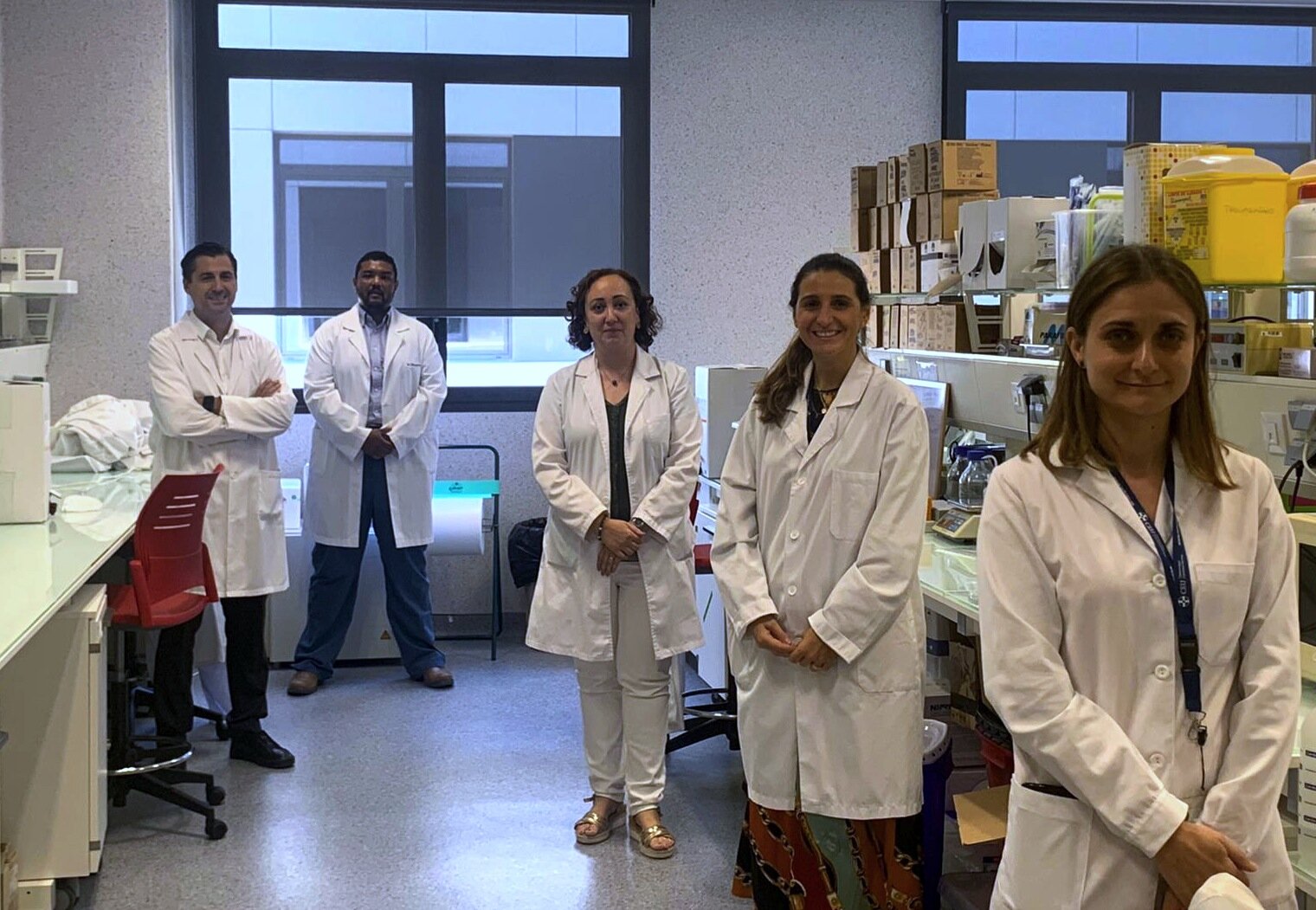

The dark pigmentations that appear around the gums on dental enamel have a bacterial origin and there is currently no definitive therapy to remove it entirely. In order to find the best way to fight against the creation of these black stains on teeth, the Oral Microbiology Group of the CEU Cardenal Herrera University (CEU UCH) of Valencia, Spain, has conducted the first study in the world with adults on the metagenomics of dental black plaque, in collaboration with company Microomics Systems S.L, whose headquarters are in Barcelona. “Although in previous studies we assessed the efficiency of phototherapy in the treatment of these stains on the enamel, knowing the metagenomics of this type of dark plaque of bacterial origin will allow us to progress in finding definitive treatments for its removal,” highlight the study authors.
In their work, published in the journal Scientific Reports, the CEU UCH and Microomics Systems researchers have described and compared the microbial diversity of dental white plaque and the black stains that appear on them, on a total of 27 volunteer adults, all of which are receiving treatment at the University Dental Clinic of the CEU UCH in Valencia. The characterization of the taxonomic profile of the samples and comparing the microbiomes of white and black dental plaque is a study that had only been performed on children, who most often suffer from these types of stains.
The first map of the microbiome of dental black plaque
With this data, the CEU UCH team has created the first map of the microbiome of dental black plaque in adults, finding that the variety of bacterial species is lower than in dental white plaque. The five most common bacterial species found in the dental black plaque of the adult studies were from the Capnocytophaga, Leptotrichia, Fusobacterium, Corynebacterium and Streptococcus genuses. The study also made it possible to detect the existence of functional routes among the microbiomes of white and black dental plaque.
“We have found that the key for the formation of dental black plaque are the routes of biosynthetic compounds of the heme group, which would explain the black color,” highlight the researchers. The sequestration of iron by the bacteria of the black plaque and its subsequent metabolism towards biosynthetic routes of the heme group is essential for the formation of this type of plaque, the study reveals. This finding, along with new research for its complete description, will make it possible to progress in the designing of treatments that prevent the appearance of dental black plaque in the most effective way.
The Oral Microbiology Group of the CEU UCH published in 2018 a pioneering study on the use of antimicrobial phototherapy to fight, with light and oxygen, against the proliferation of the bacteria that cause the black stains on the enamel or dental black plaque. Using a household tooth whitening device, they managed to decrease the size, color and bacterial colonization of the dental black plaque closest to the gums in the group of patients who took part in the test. In prior studies, they also analyzed the risk factors for the appearance of these black stains, such as water with high iron contents of high pH, which is why they recommend consuming mineral water instead of tap water or osmosis water for people who are prone to having these black pigmentations appear on their enamel.
more recommended stories
 Safer Allogeneic Stem Cell Transplants with Treg Therapy
Safer Allogeneic Stem Cell Transplants with Treg TherapyA new preclinical study from the.
 Autoimmune Disorders: ADA2 as a Therapeutic Target
Autoimmune Disorders: ADA2 as a Therapeutic TargetAdenosine deaminase 2 (ADA2) has emerged.
 Kaempferol: A Breakthrough in Allergy Management
Kaempferol: A Breakthrough in Allergy ManagementKaempferol, a dietary flavonoid found in.
 Early Milk Cereal Drinks May Spur Infant Weight Gain
Early Milk Cereal Drinks May Spur Infant Weight GainNew research published in Acta Paediatrica.
 TaVNS: A Breakthrough for Chronic Insomnia Treatment
TaVNS: A Breakthrough for Chronic Insomnia TreatmentA recent study conducted by the.
 First-of-Its-Kind Gene-Edited Pig Kidney: Towana’s New Life
First-of-Its-Kind Gene-Edited Pig Kidney: Towana’s New LifeSurgeons at NYU Langone Health have.
 Just-in-Time Training Improves Success & Patient Safety
Just-in-Time Training Improves Success & Patient SafetyA study published in The BMJ.
 ChatGPT Excels in Medical Summaries, Lacks Field-Specific Relevance
ChatGPT Excels in Medical Summaries, Lacks Field-Specific RelevanceIn a recent study published in.
 Study finds automated decision minimizes high-risk medicine combinations in ICU patients
Study finds automated decision minimizes high-risk medicine combinations in ICU patientsA multicenter study coordinated by Amsterdam.
 Study Discovers Connection Between Omicron Infection and Brain Structure Changes in Men
Study Discovers Connection Between Omicron Infection and Brain Structure Changes in MenA recent study in the JAMA.

Leave a Comment